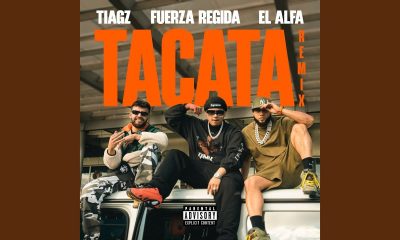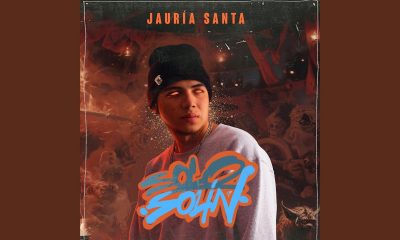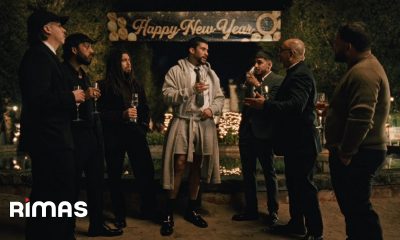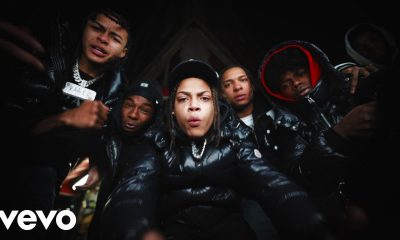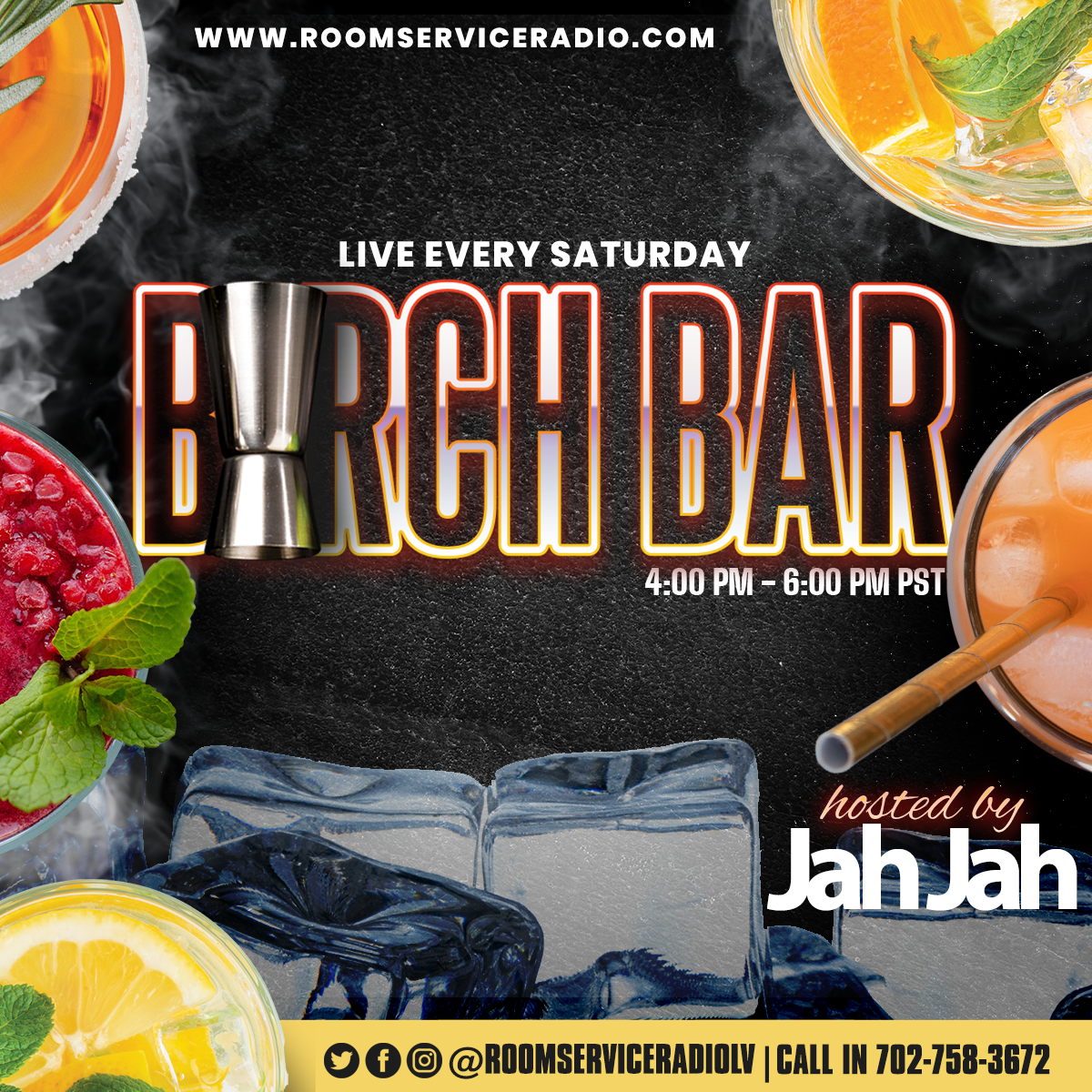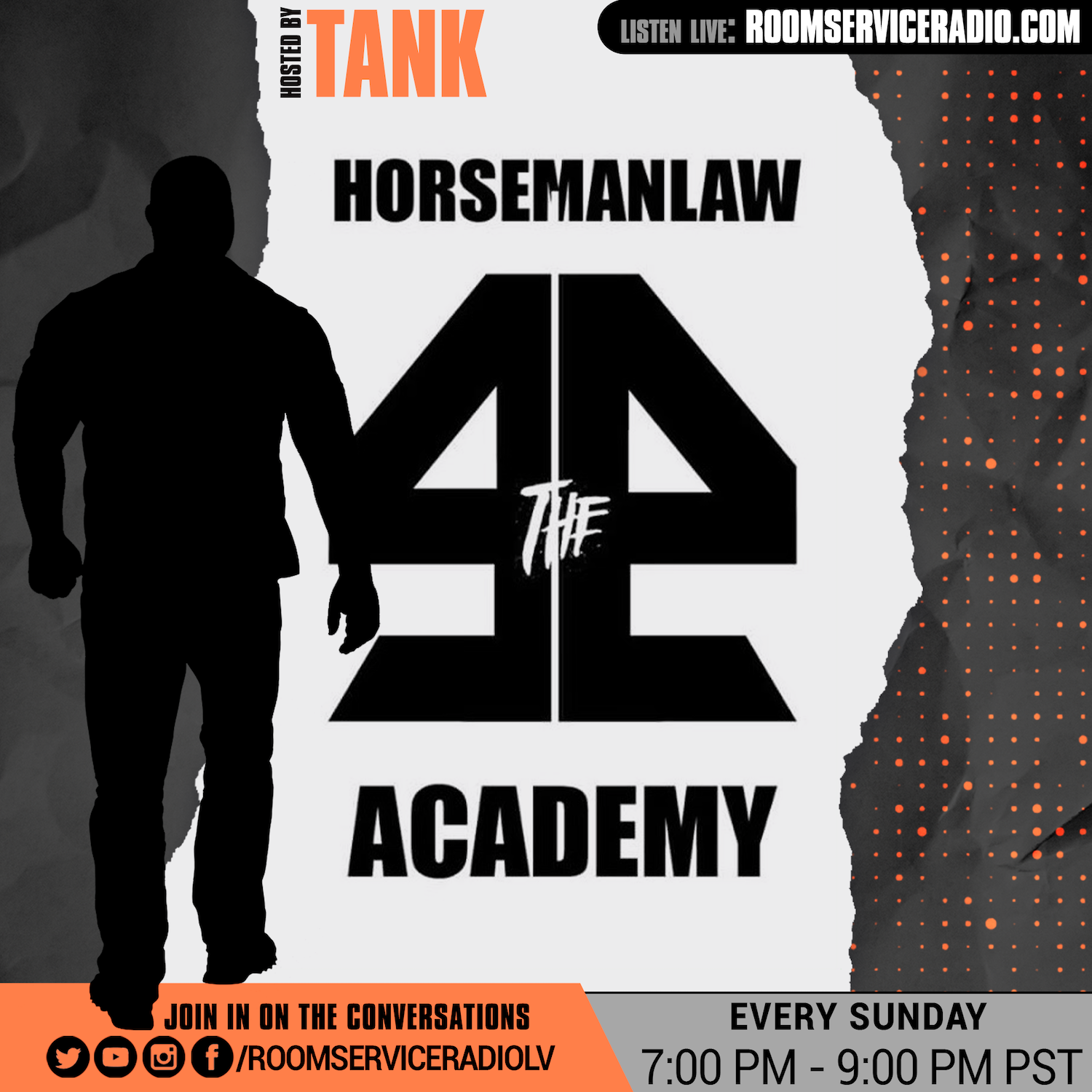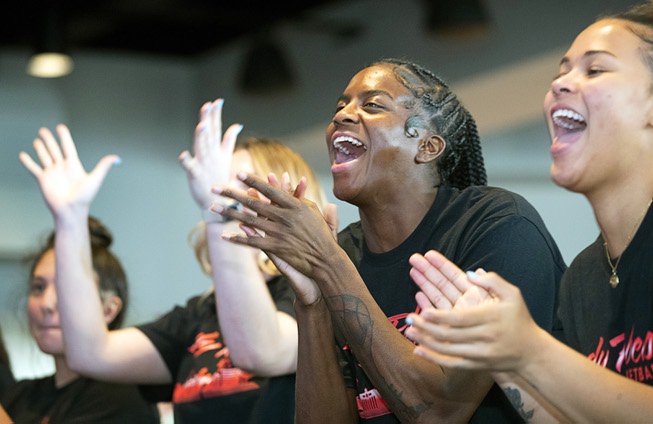
Lady Rebels react as their NCAA Tournament selection is broadcast during a watch party at the Thomas & Mack Center Sunday, March 12, 2023. From left, Alyssa Durazo-Frescas, Kenadee Winfrey, Desi-Rae Young and Nneka Obiazor. The Lady Rebels will face Michigan in Baton Rouge, Louisiana on Friday.
Sunday, July 9, 2023 | 2 a.m.
When Jalen Hill was recruited out of high school, it was a simpler time.
Four short years ago, Hill was a skinny, 6-foot-7 forward from Clark High, and as a 4-star prospect he had multiple Division I basketball programs vying for his services. He ultimately chose Oklahoma, and cited his relationship with the coaching staff, available playing time and the overall strength of the team as the deciding factors.
Times have changed.
In the summer of 2021, the NCAA approved the name, image and likeness rule, allowing college athletes — who had previously been held to the standards of amateurism — to receive payment in exchange for endorsements and other work related to their playing ability.
When Hill entered the NCAA’s transfer portal this spring, looking for a new home for his final college campaign, schools once again lined up to make their pitches, but the landscape had changed. This time around, money was part of the conversation — a big part.
“It’s a crazy difference,” Hill says. “Back then, we weren’t talking about money or any NIL. That wasn’t even on anybody’s radar. Seeing the difference from then and now and how the NIL collectives can help players, it was a crazy thing.”
NIL is now front and center as a driving force in college sports. UNLV was able to secure a commitment from Hill largely because of the NIL benefits, and if the university backers want their programs to remain competitive, it’s a recruiting model they know they’ll have to fully embrace.
How it works
Since the inception of the NCAA, athletes were given scholarships as compensation for their work on the field. Players were not allowed to otherwise profit off their athletic ability in any way, lest they violate the NCAA’s model of amateur competition.
That meant they couldn’t sign endorsement deals, sell autographs, make personal appearances, auction off their jerseys or game-worn gear, or even legally accept gifts from fans, donors or their own coaches. If the NCAA learned of a player receiving impermissible benefits, the player and the school could be fined, suspended or ruled ineligible.
The NIL rule has completely erased those boundaries. As of July 2021, players are allowed to make as much money as they can and foster as many different revenue streams as they are able, with just one limitation: The money cannot come directly from the schools.
Businesses and donors can “hire” athletes and pay them for services. Coaches, however, cannot offer players any payments, promise them NIL money or broker any deals.
So, how does that work if coaches are recruiting around NIL while at the same time being prohibited from talking turkey?
That’s where NIL collectives come in.
The “Friends of UNILV” collective is a group of Las Vegas-area business owners and UNLV supporters who have banded together to raise funds exclusively for building NIL packages for UNLV players and recruits. It’s part of the Blueprint Sports network, which runs NIL collectives for 19 colleges, including Arizona, Gonzaga and UNR.
The collectives operate adjacent to their respective athletic departments, acting as a clearinghouse for players and the people signing the checks.
Bill Paulos, a longtime UNLV donor and the chairman of the Friends of UNILV, recognized the need for an NIL collective if he wanted UNLV teams to remain in the game.
“When NIL came around two years ago in July, we sat down and said really, the best use of our funds, in order to compete, is we’re going to have to pay players,” Paulos says. “We knew we were going to have to have some form of NIL. When you’re out recruiting today, the first question from the players is no longer ‘What kind of facilities do you have?’ It’s ‘How much did Bryce Hamilton make last year?’ ”
Paulos, who previously worked as a fundraiser with the Rebel Athletic Fund, rounded up local businesses and boosters to amass funds that are earmarked for “player acquisition,” as he puts it. Contributors to the Friends of UNILV include Findlay Automotive, Emerald Island Casino, Born and Raised Las Vegas, Montage Financial Group and others.
Early results promising
UNLV got a late start on the NIL front compared with other universities, but the efforts appear to be gaining traction.
According to Paulos, the Friends of UNILV collective has combined to pay its athletes between $500,000 and $600,000 in each of the past two years. Compare that with USC quarterback Caleb Williams, who will reportedly earn $2.6 million by himself this year, or Purdue’s Zach Edey, who is slated to earn $825,000 for his senior season, and UNLV’s overall NIL budget seems like a drop in the ocean.
Before the Friends of UNILV can dream of bidding on elite players like that on the open market, the collective first has to catch up to its direct competition.
“We’re raising from behind,” Paulos says. “Reno has a budget, I’m told, of $1.2 million. New Mexico has spent $1.5 million. I know New Mexico outbid a couple of schools for some of their players.”
The Friends of UNILV scored its first big success in April, when NIL deals played a pivotal role in securing a prime recruiting class for Kevin Kruger’s basketball team.
Key transfers Kalib Boone (Oklahoma State) and Keylan Boone (Pacific) signed on the same day as Hill. A month later, high school phenom D.J. Thomas committed to UNLV, completing an offseason overhaul of the roster.
All four are believed to have landed significant NIL deals upon signing, and now Kruger will head into the 2023-24 season with a squad that looks very capable of making the NCAA Tournament for the first time in 11 years. The players aren’t disclosing how much they received.
Fighting for every cent
When fans and outside observers think of NIL deals, they probably picture local car dealerships and big-money payments like the ones landed by the new UNLV basketball recruits. But while star players in high-profile sports such as football and men’s basketball are first in line, not every athlete in every field of play can afford to fund an extravagant lifestyle via NIL.
Working through the Blueprint Sports clearinghouse, the UNLV women’s basketball squad has set up a page on NILclub.com, a site that allows teams to solicit smaller donations from individual fans.
The page is run by the players themselves, including senior center Desi-Rae Young, the 2021-22 Mountain West Player of the Year who has led her team to consecutive NCAA Tournament appearances.
Like other crowdfunding sites,
NILclub.com allows teams to set a monthly goal with the hope of accruing enough recurring donors to meet the threshold. The UNLV women started their page in May and have set an attainable goal of $520 per month.
Far from a brand-new car or a luxury off-campus apartment, their desires are more modest.
“It helps us put money in our pocket,” Young says. “Going to a team dinner or taking a team trip or going to the spa.”
The small-donor approach to NIL is newer, and necessary for teams that generally operate outside the spotlight. Ten UNLV programs are signed up on the crowdfunding site, including the baseball and softball teams, the dance team, women’s volleyball, women’s golf, women’s track and field, and men’s soccer.
Despite her outstanding production on the court and the success of the team over the past two seasons, Young says individual NIL opportunities have been hard to come by.
“It hasn’t really been a great experience,” she says. “I don’t really worry about NIL. If it comes, it comes. I worry about winning and getting to the tournament. (NIL) is not something I’ve been worrying about. Not a lot of people have reached out.”
In June, the women’s basketball page had nine monthly donors and had raised $430 toward its goal of $520.
One of those contributors is Jan Jones, a UNLV superfan who has been a men’s basketball season ticket holder since 1972 and a women’s season ticket holder since 2007. When a friend forwarded her a link to the page, she signed up for a recurring monthly donation without hesitation.
Jones is happy to know her money is going directly to the players she loves and cheers on at every home game.
“I think it’s a great idea,” Jones says. “That’s the way it should be done. I don’t have the big bucks. I’ve donated in the past from time to time when the team needed something, but I like the idea of contributing to the players so they can have the things they need.”
The future of NIL
What’s clear to everyone involved is there’s no way the NCAA can go backward when it comes to compensating athletes. The NIL system will only become more expansive in coming years, even if it comes with more regulation.
What might the next sea change be? Paulos would like to see the NCAA remove the final guardrail and allow coaches to deal directly with players on the NIL front.
“This is something that’s here, and it’s something that’s going to evolve,” Paulos says. “I don’t believe the way it’s structured today will be the way it’s structured three or five years from now. I think the universities need more say. They’ve taken the entire thing out of university’s hands, which I don’t think is right. But the kids should get paid.”
If that were to come to pass, the college game would become virtually indistinguishable from professional leagues. Paulos even envisions a near future in which the players will negotiate a collective bargaining agreement.
“Every 5-star kid will have an agent,” he says. “Within the next two years, these coaches will no longer deal with parents and AAU coaches. They’ll be dealing with agents.”
And expect the prices on top talent to continue trending upward. Paulos projects the Friends of UNILV collective to increase its spending to $1.5 million this year.
Whether it’s a 5-star prospect signing for millions of dollars or a non-revenue team hoping to fund a group bowling outing, Hill believes NIL income is a lifeline for the players.
“The biggest impact I’ve seen on players is just having the money to support their families,” Hill says. “Some players didn’t grow up with the best life back home. For them to be able to send money back and help out their moms, help out their dads, their sisters, their cousins, I think that’s the biggest impact. Just being able to help other people.”
In the new world of NIL, the players get paid, and the schools that figure it out are the ones that are going to get the best players. It’s as simple as that.
“We just need to keep the money coming in,” Paulos says. “As long as we keep the money coming in, we can be competitive.”


